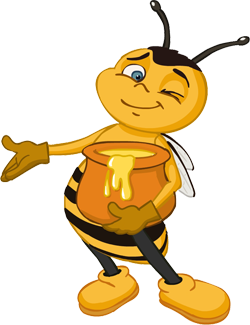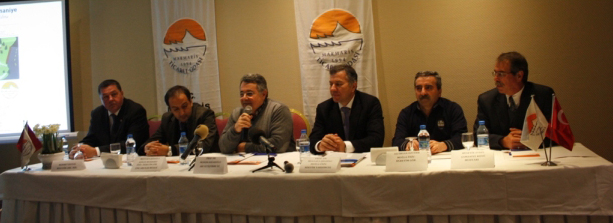
There are some other assets Marmaris features besides tourism. One of these assets is pine honey…
Turkey ranks within the first five honey producing countries in the world and it is the top first country in pine honey production in the world.
92% of the world’s pine honey procurement is produced in the Aegean region in Turkey and 8% is produced in Greece. Mugla contributes to the pine honey production with 75% and Marmaris with 30%.
Marmaris plays a great role in pine honey production for Mugla region. There has been a competition organised on the best honey production during II. Mugla International Apiculture and Pine Honey Congress. Osmaniye village in Marmaris has been granted with the best top quality honey production and apiarists award in this competition.

Osmaniye is one of the villages which is unable to get its share from tourism activities generating in Marmaris. Osmaniye is surrounded by pine trees all around and the pine honey production is highly intense in this village. In order to introduce pine honey as an international brand to tourism activities; ‘‘Marmaris Honey House’’ project has been launched with the support of Marmaris District Governorship Office and Osmaniye District Management Office following a remarkable committee meeting dated 2 March 2011.

The definitive objective of ‘‘Marmaris Honey House’’ project is to supervise Osmaniye and Marmaris in macro perspective. This project has been shaped with the goals of supporting apiculture activities and local development with a scientific and ethnographic center in Marmaris where honey production has already been branded.
The supporting objectives of the project are to introduce Osmaniye as a world famous center on apiculture, apicultural products and honey procurement and to create an alternative income and employment area for the apiarists in Osmaniye village who have been continuing their activities in honey procurement for decades.
The most important aspect of the architectural building project designed by architect Ahmet Caglar Erakalin has been hexagonal forms; the form of the honey comb. Hexagon is a form which can be constructed only by the bees in the nature. The reason nature uses this form is that there is no gap in between the hexagonal shapes and they could shape up in an assembling form in great harmony. In our architectural project; shapes have been put aside together to create forms resembling honey combs. Various heights and gaps have been practiced during its design process in accordance with the architectural requirements, thus creating an organic structure. Elements placed according to the plan have enabled the project to finalize itself. ‘‘Marmaris Honey House’’ project is an architectural success for our region with its unique design.

‘‘Marmaris Honey House’’ project has been shaped and planned to create a local awareness in the medium term for introducing ‘‘Marmaris Pine Honey’’ brand internationally. For that reason; the project has been designed to include workshops and meeting rooms for the females living in Osmaniye to display their local, authentic and unique products and to participate in courses on various subjects.
Our objective is to become a scientific center with our well-known brand Marmaris pine honey in Osmaniye where apiculture activities are quite intense. This center will be a social recreation area for our village and its inhabitants, a scientific museum - showroom and research - development laboratory.
The construction of Marmaris Honey House has started on 1 July 2011 and amongst our consultants there are expert apicurist Prof. Dr. Muhsin Dogaroglu and Project Coordinator of Cine Apiculture Museum and Adnan Menderes University Cine Polytechnic Assistant Mustafa Koseoglu and branding expert Muhterem Ilguner.
Our studies continue with the collaboration of Mugla University Ula Ali Kocman Polytechnic Apiculture Department and Archeology Department, Marmaris District Governorship Office, Marmaris District Directorate of Agriculture and MAYBIR (Mugla Apicurists Union).
Collaboration spirit amongst the various institutions has been activated within the scope of Marmaris Honey House Project which is planned to inaugurate in March 2012 and it has been agreed that two important sectors; tourism and apiculture will be operated and engaged to each other supportively.
In the meantime share-based meetings have been organised with the apicurists to exchange different views, stakeholders have been briefed on the project and joint partnership between the apicurists and Marmaris Honey House has been set up.
Marmaris Honey House project has been introduced to the relevant senior management in the ministries. ‘‘Turkish Republic Ministry of Food, Agriculture and Livestock General Directorate’’ has been briefed regarding the project and intellectual support of the Ministry has been obtained. Once again apicurists country-wide have been contacted to exchange different views and opinions and the samples of their products have been asked for display purposes in Marmaris Honey House.
Our project scoping the scientific introduction of apiculture activities in Marmaris and surrounding towns and villages targets to maintain its activities in more effective means by conferences, seminars and meetings planned to be held in the coming days.
